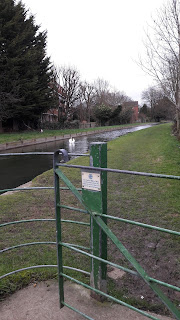What coffee do you drink? Here are some ways to enjoy coffee (and food) Ethiopian style near Shepherd's Bush. Words from Nicola Baird.
My friend, the incredible singer Hanisha Solomon, who was born in Ethiopia, suggested we try eating at Flamingo - one of London's excellent Ethiopian restaurants - for a half-term treat. As another close friend, Nicky, and I both find it difficult to get our exam-stressed teenagers out of bed in the morning we thought it an excellent choice of treat, knowing Nell and Xander would be persuaded to leave the house for an Ethiopian lunch. Which is how we became a party of six sitting around two sharing plates of neatly rolled injera and various triangular piles of vegetables.
In case you don't know much about Ethiopian music - this is my favourite song by Hanisha Solomon (listen while you read, and ideally buy her albums).
https://youtu.be/8wdV6vv4xE4
Injera is the delicious Ethiopian bread that works as a plate and an eating utensil (use the right hand!), looks tricky to make. The teens - our meat eating quotient - also had a rather generous heap of lamb cooked in two different ways. They both preferred the spicy option.
At Flamingo there is also a mini booth at the back of the restaurant acting as a fresh butcher. It was quite something to see meat being carved off a trio of haunches, handed to the chef and cooked up. I didn't take a photo as it felt rude, but I wish I had - will have to go back.
Ethiopians have a very generous culture. Hanisha begged us to eat more, drink more water, eat more injera and soon we all felt rollingly full. Which is when the roasted Ethiopian coffee beans were brought to our table for inspection. The coffee was made out of sight then brought back in an iron pot and served in handleless cups with popcorn. What a treat.
Since I saw the award-winning Sundance documentary, Black Gold about the struggle to grow Ethiopian coffee, I try to buy fair trade, and ideally, Ethiopian beans. It's even more important when you know that 15 million Ethiopians make a living related to coffee (equal to 67 per cent of the country's foreign exports). But the farmers producing the beans may only make 12-25 cents (per kilo picked) leaving many impoverished. Here's a trailer from the film to inspire, explaining why fair "trade is more important than aid."
https://youtu.be/uiWDjObe_fs
One of the lovely things about Flamingo is that it isn't just packed with Ethiopians wanting a taste of home. There were also plenty of lunchers enjoying a good value, tasty meal close to Goldhawk Road tube. London has quite a few Ethiopian restaurants, and I certainly hope to visit more. But when it comes to coffee, which I drink in bucket-loads, daily, picking fair-priced Ethiopian beans has become a habit I'm happy to have.
 |
| Coffee the Ethiopian way. |
In case you don't know much about Ethiopian music - this is my favourite song by Hanisha Solomon (listen while you read, and ideally buy her albums).
https://youtu.be/8wdV6vv4xE4
Injera is the delicious Ethiopian bread that works as a plate and an eating utensil (use the right hand!), looks tricky to make. The teens - our meat eating quotient - also had a rather generous heap of lamb cooked in two different ways. They both preferred the spicy option.
At Flamingo there is also a mini booth at the back of the restaurant acting as a fresh butcher. It was quite something to see meat being carved off a trio of haunches, handed to the chef and cooked up. I didn't take a photo as it felt rude, but I wish I had - will have to go back.
Ethiopians have a very generous culture. Hanisha begged us to eat more, drink more water, eat more injera and soon we all felt rollingly full. Which is when the roasted Ethiopian coffee beans were brought to our table for inspection. The coffee was made out of sight then brought back in an iron pot and served in handleless cups with popcorn. What a treat.
Since I saw the award-winning Sundance documentary, Black Gold about the struggle to grow Ethiopian coffee, I try to buy fair trade, and ideally, Ethiopian beans. It's even more important when you know that 15 million Ethiopians make a living related to coffee (equal to 67 per cent of the country's foreign exports). But the farmers producing the beans may only make 12-25 cents (per kilo picked) leaving many impoverished. Here's a trailer from the film to inspire, explaining why fair "trade is more important than aid."
https://youtu.be/uiWDjObe_fs
One of the lovely things about Flamingo is that it isn't just packed with Ethiopians wanting a taste of home. There were also plenty of lunchers enjoying a good value, tasty meal close to Goldhawk Road tube. London has quite a few Ethiopian restaurants, and I certainly hope to visit more. But when it comes to coffee, which I drink in bucket-loads, daily, picking fair-priced Ethiopian beans has become a habit I'm happy to have.
- Have a meal at Flamingo, 31 Goldhawk Road, Shepherd's Bush, W12
- Join an Ethiopian cookery class on Wednesday 19 April from 7-9.30pm with Ethiopian Master Chef Tsige. For EC1 residents it's £5, anyone else £30. To book contact Central Street Cookery School, 90 Central Steet, London, EC1 (near Old Street) on 020 7549 8176 or info@centralstreet.org or check their website.
- More about Nicola Baird's books and blogs on www.nicolabaird.com or www.islingtonfacesblog.com












